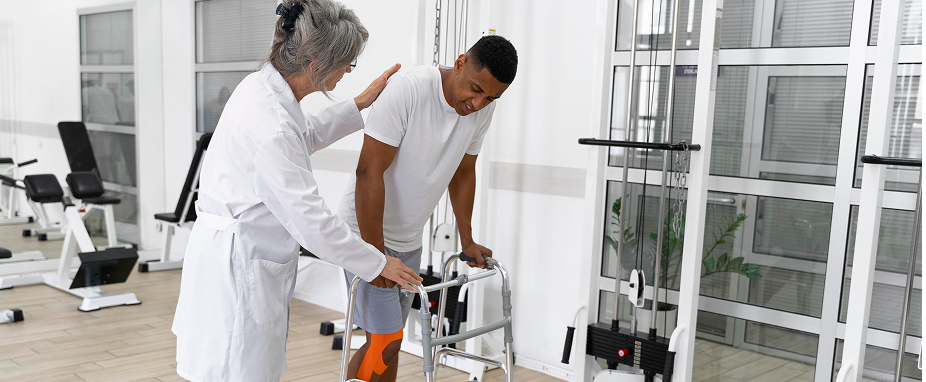
Physiotherapy for neck pain and cervical spondylosis includes posture correction, cervical mobilization, stretching, strengthening exercises, and pain relief techniques to improve mobility and reduce stiffness.
Management of lower back pain involves core strengthening, postural training, spinal mobilization, traction, and functional exercises to relieve pain and improve daily activity performance.
Therapy includes joint mobilization, stretching, strengthening, and functional exercises to restore shoulder range of motion, reduce stiffness, and improve upper limb function.
Treatment involves strengthening, stretching, postural correction, and pain-relief techniques to restore function, reduce inflammation, and improve shoulder stability.
Physiotherapy for lateral and medial epicondylitis includes stretching, strengthening, soft tissue mobilization, and activity modification to relieve pain and restore function.
Therapy addresses carpal tunnel syndrome, trigger finger, and tendonitis with exercises, splints, manual therapy, and ergonomic guidance to reduce pain and improve hand function.
Physiotherapy focuses on strengthening, stretching, gait training, and functional exercises to reduce hip pain, improve mobility, and enhance quality of life.
Rehabilitation includes quadriceps and hamstring strengthening, range-of-motion exercises, balance training, and functional mobility exercises to relieve pain and improve knee function.
Therapy after fractures includes joint mobilization, strengthening, functional training, and gait re-education to restore mobility, strength, and independence.
Physiotherapy following orthopedic surgeries (joint replacement, ligament repair, spinal surgery) focuses on pain management, range-of-motion exercises, strengthening, and functional recovery.
Programs include safe strengthening, balance training, posture correction, and fall prevention strategies to reduce fracture risk and maintain independence.
Treatment includes nerve mobilization, stretching, strengthening, core stabilization, posture correction, and pain-relief techniques to reduce radiating pain and improve function.
Management includes strengthening, range-of-motion exercises, functional training, and pain-relief modalities to reduce stiffness and enhance mobility.
Physiotherapy programs combine pain-relief techniques, stretching, strengthening, posture correction, and relaxation exercises to manage chronic musculoskeletal pain and improve function.
Therapy addresses forward head posture, rounded shoulders, kyphosis, and other postural issues through corrective exercises, ergonomic advice, and strengthening programs.
© 2025 PhysioMeet. All Rights Reserved